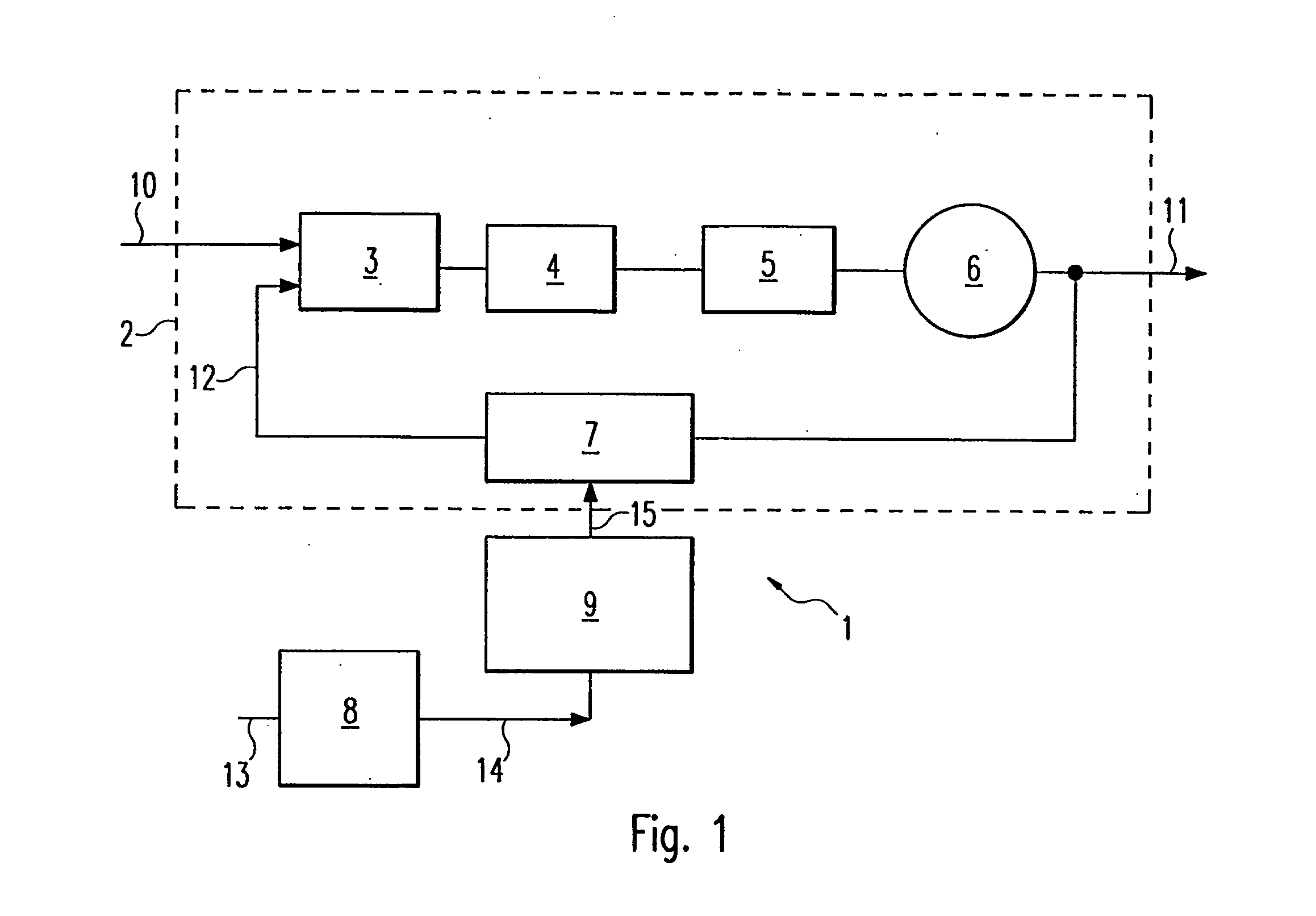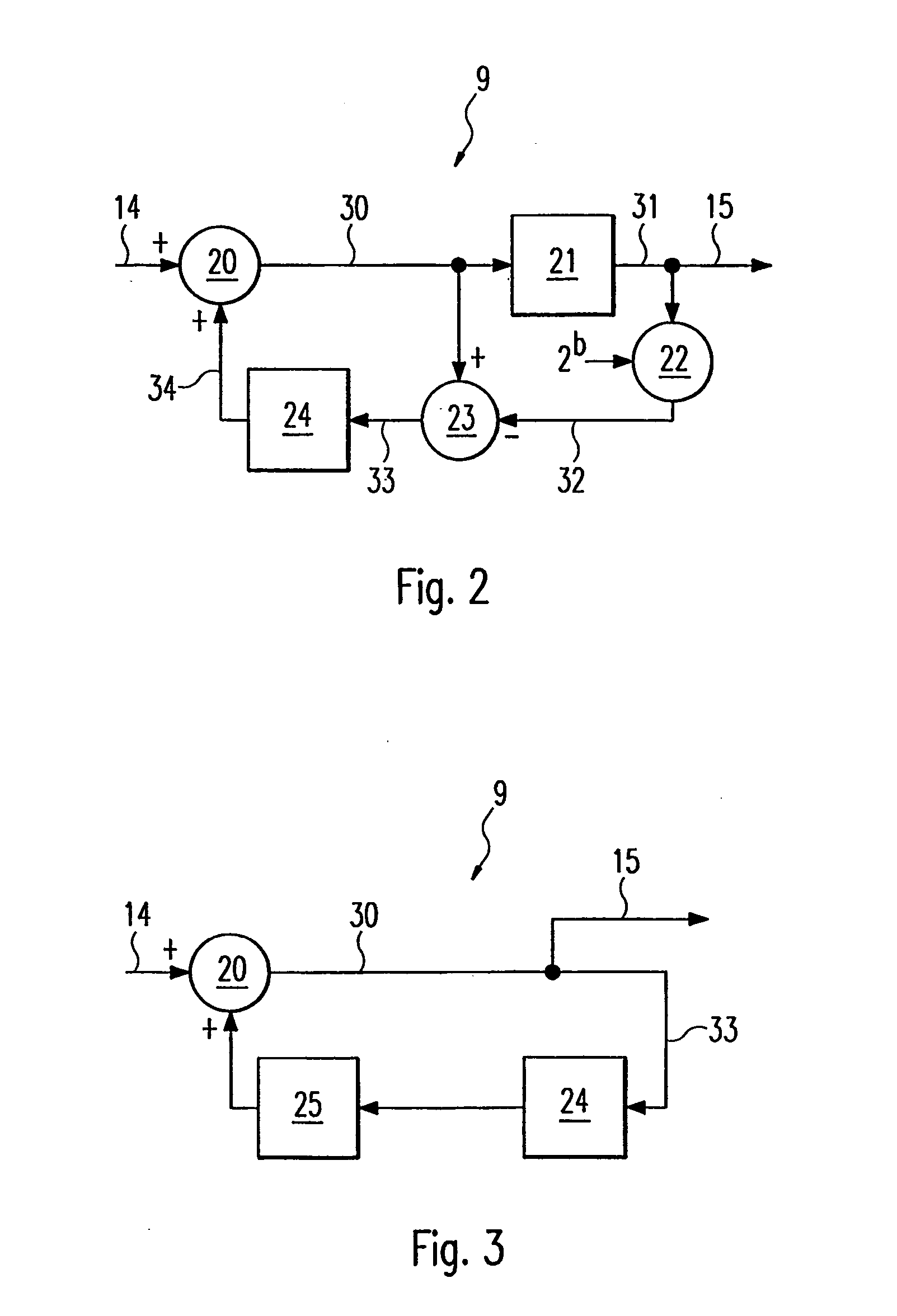Single point modulator having a PLL circuit
a single-point modulator and circuit technology, applied in the field of single-point modulators, can solve the problems of requisite matching accuracy and complex circuitry of single-point modulators
- Summary
- Abstract
- Description
- Claims
- Application Information
AI Technical Summary
Benefits of technology
Problems solved by technology
Method used
Image
Examples
Embodiment Construction
[0026]FIG. 1 shows a single-point modulator 1 having a PLL circuit 2 which uses an input or reference signal 10 at a reference frequency fref to produce an output signal 11 at an output frequency fout. The output signal 11 can be modulated by digital modulation data 15.
[0027] The PLL circuit 2 contains a phase frequency detector 3 whose inputs are supplied with the reference signal 10 and a frequency divider signal 12 which has been fed back. The reference signal 10 is derived, for example, from an oscillating crystal. The phase frequency detector 3 compares the phases of the two signals which are fed to its inputs and produces, at its output, a control signal corresponding to the phase difference between the reference signal 10 and the frequency divider signal 12. The control signal is fed into the input of a charge pump 4 which, as a function of the control signal, generates a current for charging a loop filter 5 connected downstream of the charge pump 4. The loop filter 5 contai...
PUM
 Login to View More
Login to View More Abstract
Description
Claims
Application Information
 Login to View More
Login to View More - R&D
- Intellectual Property
- Life Sciences
- Materials
- Tech Scout
- Unparalleled Data Quality
- Higher Quality Content
- 60% Fewer Hallucinations
Browse by: Latest US Patents, China's latest patents, Technical Efficacy Thesaurus, Application Domain, Technology Topic, Popular Technical Reports.
© 2025 PatSnap. All rights reserved.Legal|Privacy policy|Modern Slavery Act Transparency Statement|Sitemap|About US| Contact US: help@patsnap.com



